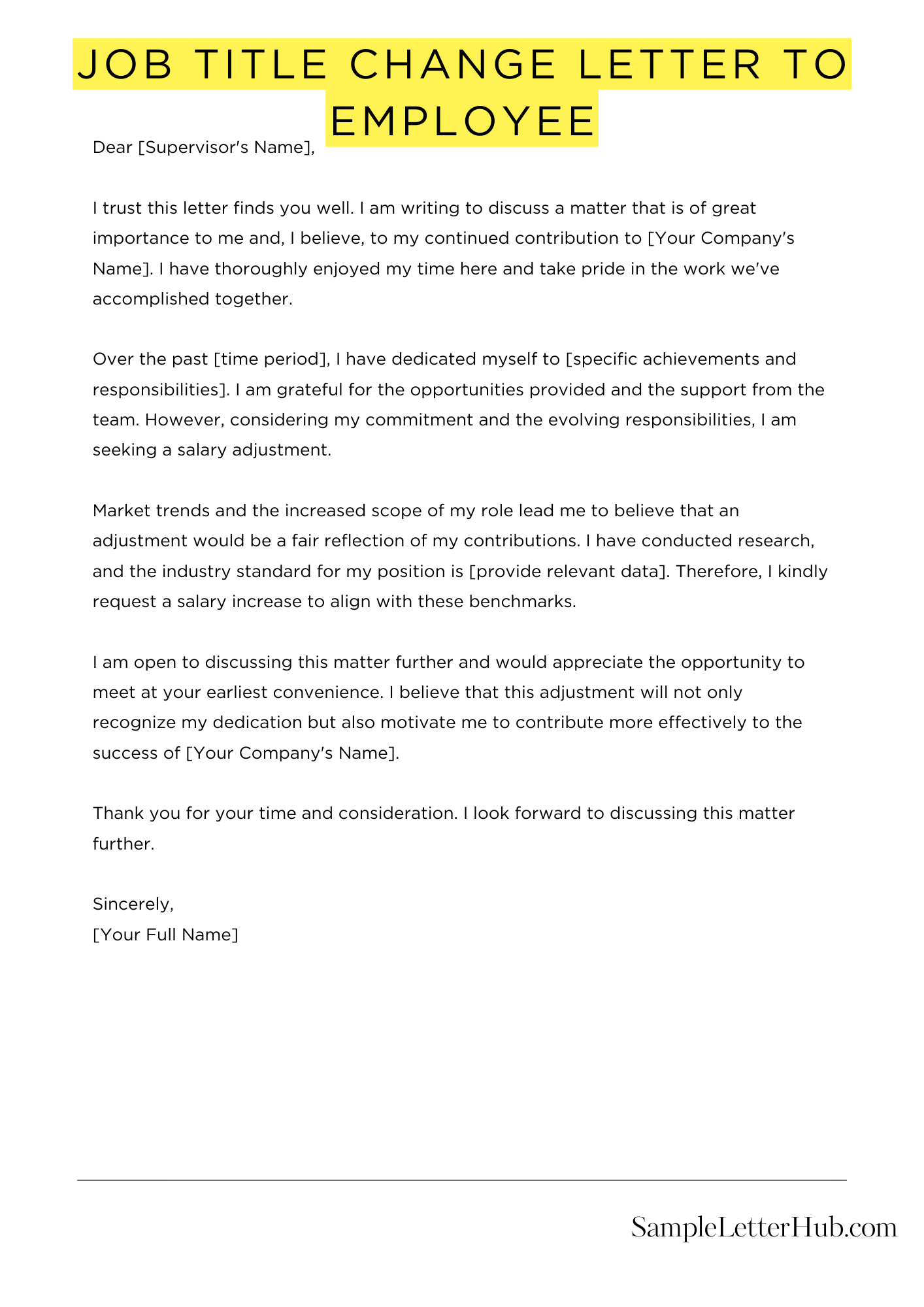A job title change letter is a formal document that notifies an employee of a change in their job title. It is typically used when an employee’s responsibilities or duties have changed significantly, or when the company is undergoing a reorganization.
In this article, we will share some templates, examples, and samples of job title change letters. These letters can be used as a starting point for writing your own letter, or you can simply adapt them to fit your specific needs.
We hope that this article will be helpful for you. Please let us know if you have any questions.
Job Title Change Letter to Employee
Dear [Employee Name],
I am writing to inform you of a change in your job title, effective [date]. Your new title will be [new job title].
This change is a reflection of your increased responsibilities and contributions to the team. In your new role, you will be responsible for [list of responsibilities].
We are confident that you will continue to excel in your new role. Your dedication and hard work are greatly appreciated.
If you have any questions or concerns, please do not hesitate to contact me.
Sincerely,
[Your Name]

How to Write a Job Title Change Letter to an Employee
When an employee’s job title changes, it’s important to send them a formal letter to document the change. This letter should be clear, concise, and professional.
1. Start with a Formal Salutation
Begin the letter with a formal salutation, such as “Dear [Employee’s Name].”
2. State the Purpose of the Letter
In the first paragraph, state the purpose of the letter. For example, “I am writing to inform you of a change in your job title.”
3. Provide Details of the Change
In the second paragraph, provide details of the change, including the employee’s new job title, department, and reporting manager. For example, “Your new job title is [New Job Title]. You will be reporting to [Reporting Manager] in the [Department] department.”
4. Explain the Reason for the Change
If there is a reason for the change, explain it in the third paragraph. For example, “This change is being made to reflect your increased responsibilities and contributions to the team.”
5. State the Effective Date
In the fourth paragraph, state the effective date of the change. For example, “This change will be effective [Effective Date].”
6. Express Appreciation
In the fifth paragraph, express your appreciation for the employee’s contributions and wish them well in their new role. For example, “I appreciate your hard work and dedication to the company. I wish you all the best in your new role.”
7. Close with a Formal Valediction
Close the letter with a formal valediction, such as “Sincerely,” or “Best regards.”
FAQs about Job Title Change Letter To Employee
What should be included in a job title change letter?
A job title change letter should include the employee’s name, new job title, effective date of the change, and reason for the change. It should also be signed by the employee’s manager or HR representative.
What is the purpose of a job title change letter?
A job title change letter is used to formally notify an employee of a change in their job title. It can also be used to explain the reason for the change and to outline the employee’s new responsibilities.
How should a job title change letter be written?
A job title change letter should be written in a professional and concise manner. It should be clear and easy to understand, and it should avoid using jargon or technical terms.
What are some common reasons for a job title change?
Some common reasons for a job title change include a promotion, a change in responsibilities, or a change in the company’s organizational structure.
What are the benefits of a job title change?
A job title change can benefit both the employee and the company. For the employee, it can lead to increased pay, more responsibility, and a greater sense of accomplishment. For the company, it can help to improve employee morale, productivity, and retention.

